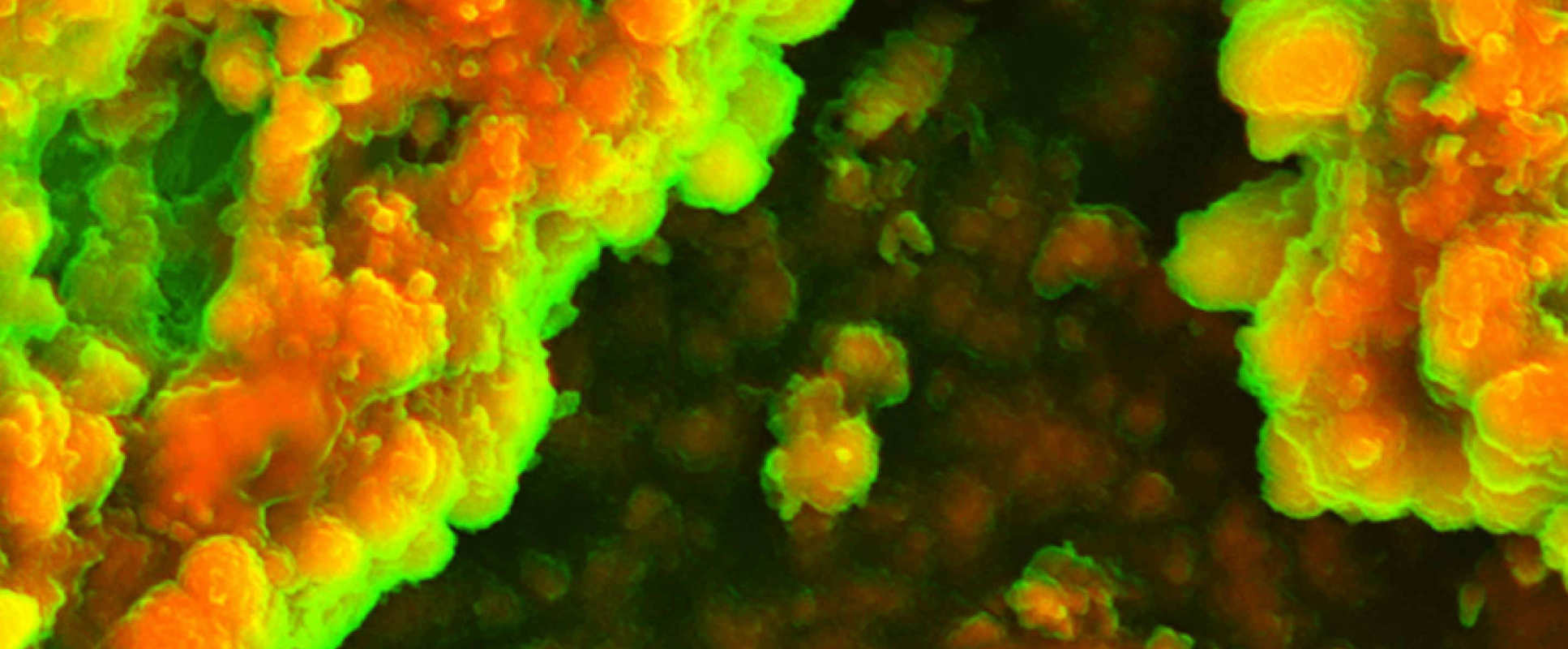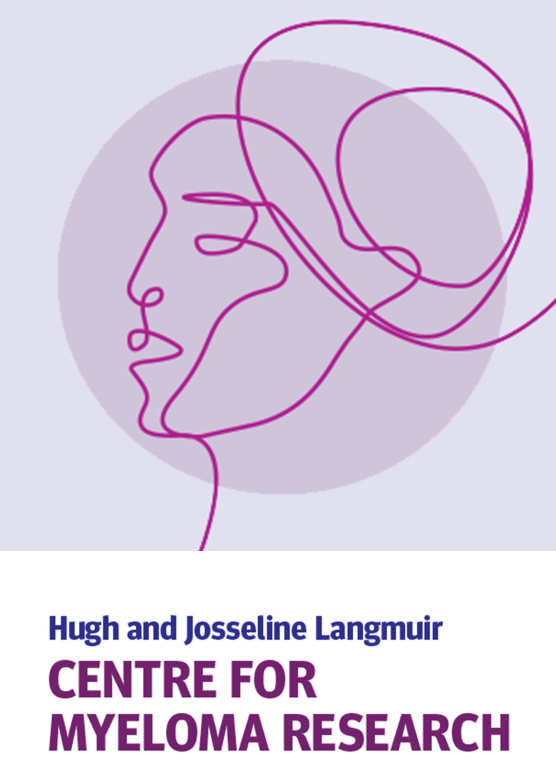
Contact
- CRUK Advanced Clinician Scientist
- Clinical Reader in Molecular Haemato-Oncology
+44 (0)20 3313 4017
holger.auner04@imperial.ac.uk
Areas of research
Proteotoxic stress and metabolism
Myeloma cells are characterised by a unique sensitivity to inhibitors of the proteasome, which is responsible for the controlled degradation of most cellular proteins that have become damaged or are otherwise unwanted. Nevertheless, resistance to proteasome inhibitors occurs in essentially all patients to varying degrees. Accumulation of misfolded proteins in the endoplasmic reticulum (ER), which triggers proteotoxic ‘ER stress’, is widely believed to be the main mechanism of action of proteasome inhibitors. However, data from our lab and other research groups suggest complex interactions between proteasomal protein degradation and multiple metabolic processes. Our aim is to find metabolic and proteostatic vulnerabilities that we can exploit therapeutically.
Tissue biophysics in myeloma biology
Several important aspects of cancer cell biology are influenced by mechanical cues from the surrounding tissue. In particular, mechanical interactions and matrix remodelling have been shown to govern cancer cell metabolism. Tissue stiffness also impacts on normal haematopoiesis, and mechanical cues are known to modulate therapeutic responses. Moreover, we have shown that proteostasis-targeting drugs can alter tissue physical properties. We aim to understand how tissue stiffness and nutrient availability act together to rewire metabolic networks and regulate drug responses in myeloma.
Results
- Showing results for:
- Reset all filters
Search results
-
Journal articleMateos MV, Gavriatopoulou M, Facon T, et al., 2021,
Effect of prior treatments on selinexor, bortezomib, and dexamethasone in previously treated multiple myeloma
, Journal of Hematology and Oncology, Vol: 14, ISSN: 1756-8722Elderly and frail patients with multiple myeloma (MM) are more vulnerable to the toxicity of combination therapies, often resulting in treatment modifications and suboptimal outcomes. The phase 3 BOSTON study showed that once-weekly selinexor and bortezomib with low-dose dexamethasone (XVd) improved PFS and ORR compared with standard twice-weekly bortezomib and moderate-dose dexamethasone (Vd) in patients with previously treated MM. This is a retrospective subgroup analysis of the multicenter, prospective, randomized BOSTON trial. Post hoc analyses were performed to compare XVd versus Vd safety and efficacy according to age and frailty status (<65 and ≥65 years, nonfrail and frail). Patients ≥65 years with XVd had higher ORR (OR 1.77, p = .024), ≥VGPR (OR, 1.68, p = .027), PFS (HR 0.55, p = .002), and improved OS (HR 0.63, p = .030), compared with Vd. In frail patients, XVd was associated with a trend towards better PFS (HR 0.69, p = .08) and OS (HR 0.62, p = .062). Significant improvements were also observed in patients <65 (ORR and TTNT) and nonfrail patients (PFS, ORR, ≥VGPR, and TTNT). Patients treated with XVd had a lower incidence of grade ≥ 2 peripheral neuropathy in ≥65 year-old (22% vs. 37%; p = .0060) and frail patients (15% vs. 44%; p = .0002). Grade ≥3 TEAEs were not observed more often in older compared to younger patients, nor in frail compared to nonfrail patients. XVd is safe and effective in patients <65 and ≥65 and in nonfrail and frail patients with previously treated MM.
-
Journal articleAuner HW, Gavriatopoulou M, Delimpasi S, et al., 2021,
Effect of age and frailty on the efficacy and tolerability of once-weekly selinexor, bortezomib, and dexamethasone in previously treated multiple myeloma
, AMERICAN JOURNAL OF HEMATOLOGY, Vol: 96, Pages: 708-718, ISSN: 0361-8609- Author Web Link
- Cite
- Citations: 9
-
Journal articleSaavedra-Garcia P, Roman-Trufero M, Al-Sadah HA, et al., 2021,
Systems level profiling of chemotherapy-induced stress resolution in cancer cells reveals druggable trade-offs
, Proceedings of the National Academy of Sciences of USA, Vol: 118, ISSN: 0027-8424Cancer cells can survive chemotherapy-induced stress, but how they recover from it is not known.Using a temporal multiomics approach, we delineate the global mechanisms of proteotoxic stressresolution in multiple myeloma cells recovering from proteasome inhibition. Our observations definelayered and protracted programmes for stress resolution that encompass extensive changes acrossthe transcriptome, proteome, and metabolome. Cellular recovery from proteasome inhibitioninvolved protracted and dynamic changes of glucose and lipid metabolism and suppression ofmitochondrial function. We demonstrate that recovering cells are more vulnerable to specific insultsthan acutely stressed cells and identify the general control nonderepressable 2 (GCN2)-driven cellularresponse to amino acid scarcity as a key recovery-associated vulnerability. Using a transcriptomeanalysis pipeline, we further show that GCN2 is also a stress-independent bona fide target intranscriptional signature-defined subsets of solid cancers that share molecular characteristics. Thus,identifying cellular trade-offs tied to the resolution of chemotherapy-induced stress in tumour cellsmay reveal new therapeutic targets and routes for cancer therapy optimisation.
-
Journal articleKlionsky DJ, Abdel-Aziz AK, Abdelfatah S, et al., 2021,
Guidelines for the use and interpretation of assays for monitoring autophagy (4th edition)
, Autophagy, Vol: 17, Pages: 1-382, ISSN: 1554-8627In 2008, we published the first set of guidelines for standardizing research in autophagy. Since then, this topic has received increasing attention, and many scientists have entered the field. Our knowledge base and relevant new technologies have also been expanding. Thus, it is important to formulate on a regular basis updated guidelines for monitoring autophagy in different organisms. Despite numerous reviews, there continues to be confusion regarding acceptable methods to evaluate autophagy, especially in multicellular eukaryotes. Here, we present a set of guidelines for investigators to select and interpret methods to examine autophagy and related processes, and for reviewers to provide realistic and reasonable critiques of reports that are focused on these processes. These guidelines are not meant to be a dogmatic set of rules, because the appropriateness of any assay largely depends on the question being asked and the system being used. Moreover, no individual assay is perfect for every situation, calling for the use of multiple techniques to properly monitor autophagy in each experimental setting. Finally, several core components of the autophagy machinery have been implicated in distinct autophagic processes (canonical and noncanonical autophagy), implying that genetic approaches to block autophagy should rely on targeting two or more autophagy-related genes that ideally participate in distinct steps of the pathway. Along similar lines, because multiple proteins involved in autophagy also regulate other cellular pathways including apoptosis, not all of them can be used as a specific marker for bona fide autophagic responses. Here, we critically discuss current methods of assessing autophagy and the information they can, or cannot, provide. Our ultimate goal is to encourage intellectual and technical innovation in the field.
-
Journal articleCaputo VS, Trasanidis N, Xiao X, et al., 2021,
Brd2/4 and Myc regulate alternative cell lineage programmes during early osteoclast differentiation in vitro
, iScience, Vol: 24, Pages: 1-31, ISSN: 2589-0042Osteoclast development in response to RANKL is critical for bone homeostasis in health and in disease. The early and direct chromatin regulatory changes imparted by the BET chromatin readers Brd2-4 and osteoclast-affiliated transcription factors (TF) during osteoclastogenesis are not known. Here, we demonstrate that in response to RANKL, early osteoclast development entails regulation of two alternative cell fate transcriptional programmes, osteoclast vs macrophage, with repression of the latter following activation of the former. Both programmes are regulated in a non-redundant manner by increased chromatin binding of Brd2 at promoters and of Brd4 at enhancers/super-enhancers. Myc, the top RANKL-induced TF, regulates osteoclast development in co-operation with Brd2/4 and Max and by establishing negative and positive regulatory loops with other lineage-affiliated TF. These insights into the transcriptional regulation of osteoclastogenesis suggest the clinical potential of selective targeting of Brd2/4 to abrogate pathological OC activation.
This data is extracted from the Web of Science and reproduced under a licence from Thomson Reuters. You may not copy or re-distribute this data in whole or in part without the written consent of the Science business of Thomson Reuters.
